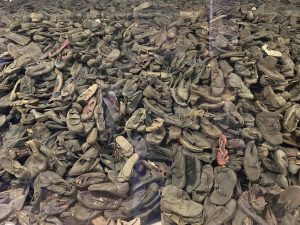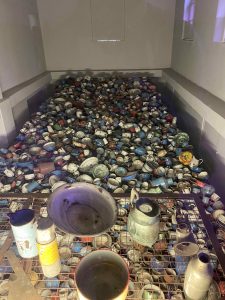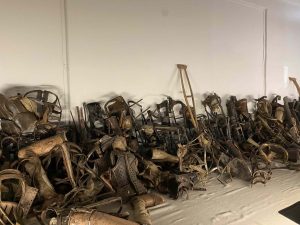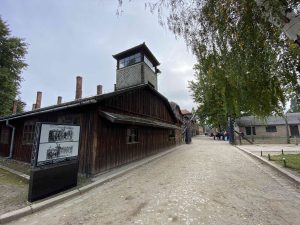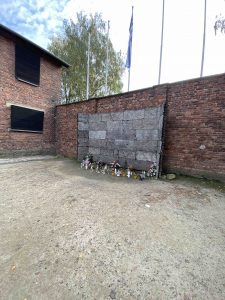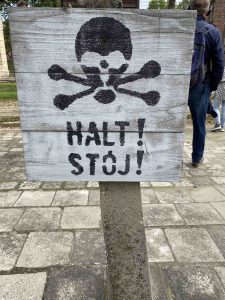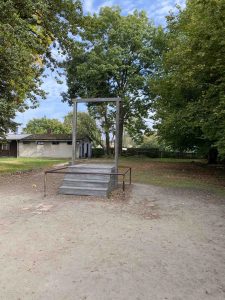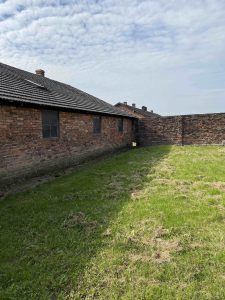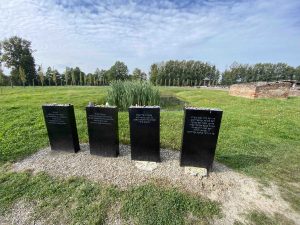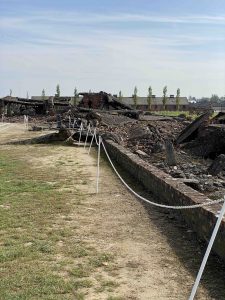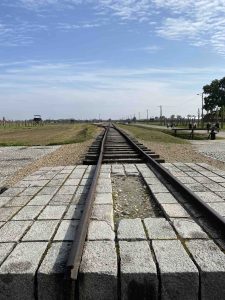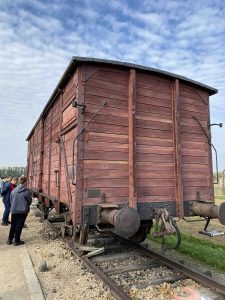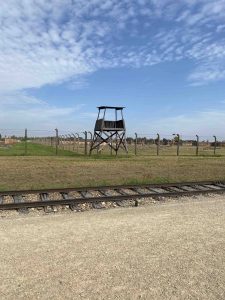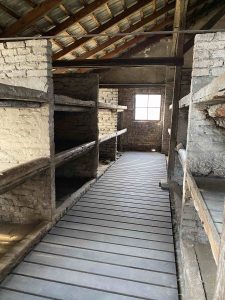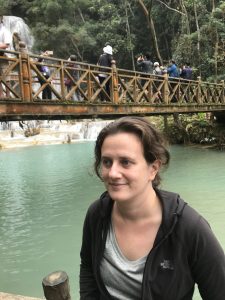Auschwitz
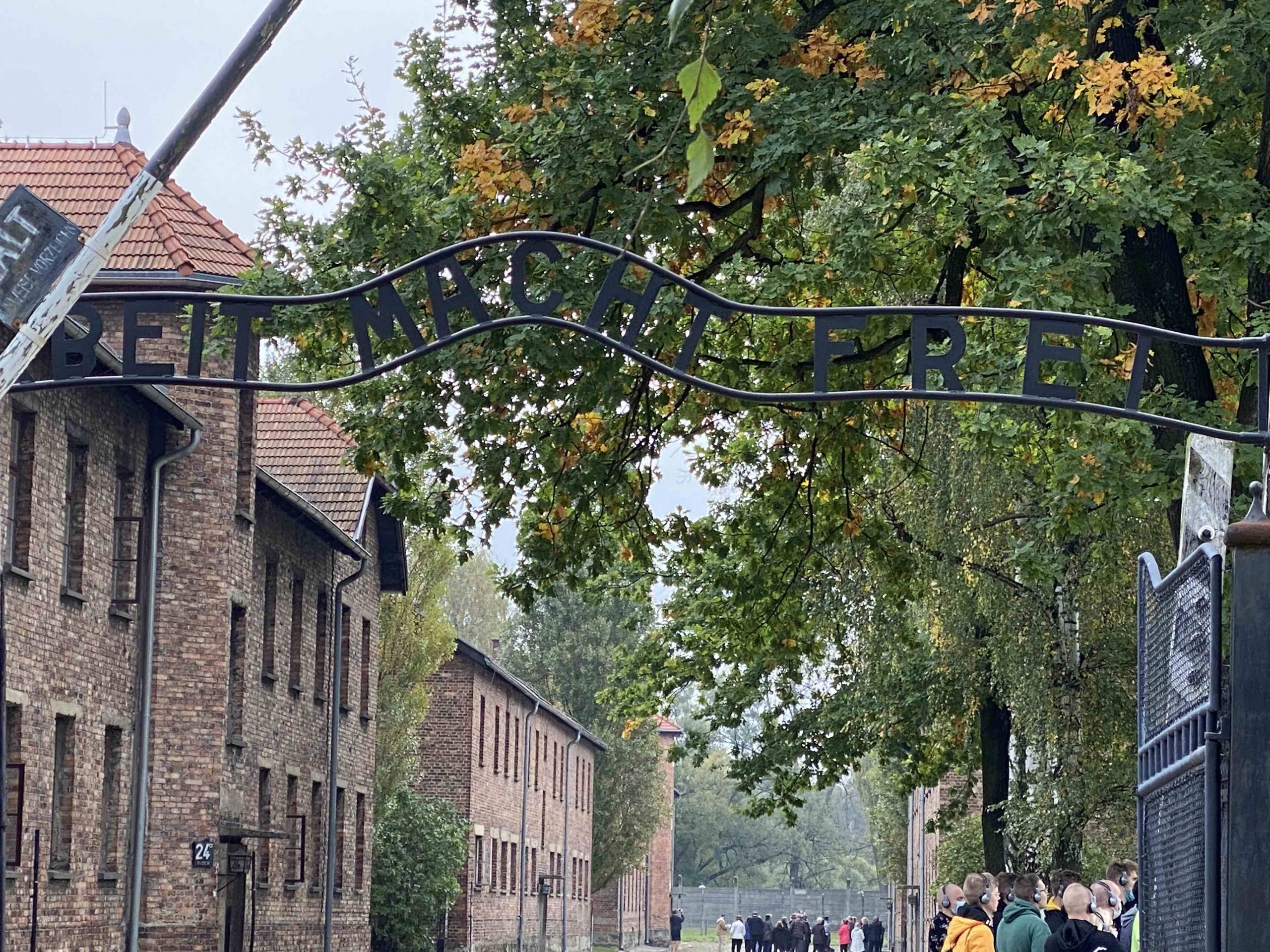
When I decided to book my trip to Krakow, I knew a day trip to Auschwitz would be part of my travels. I was dreading the experience but also knew it was necessary to witness the horror that occurred there.
I wanted to go with a tour group so that I could learn as much as possible and was very grateful for the thoughtful, knowledgeable, and experienced guide provided by the tour company. We were a small group of 18 or so and the company picked us each up from our lodging in Krakow and bused us to and from. COVID protocols were very well followed throughout.
The emotional impact of the visit to Auschwitz and Birkenau was very heavy and permanent. Nothing could quite prepare me for some of the sites seen and history shared.
Auschwitz I was a smaller camp that was the first one in the area used by the Germans to torture and murder Jews and other “undesirables.”
The site of Auschwitz I was originally a WWI camp for transient workers. The buildings were constructed of brick and cobblestone streets were lined with trees. We visited on a crisp fall day which was an odd contrast to the dark history the place held.
The buildings which were used to house and torture hundreds of thousands of Jews are now used to display artifacts of that time. There are rooms filled with belongings of the prisoners’ including shoes, luggage, dishes, and medical aids (crutches, braces, etc).
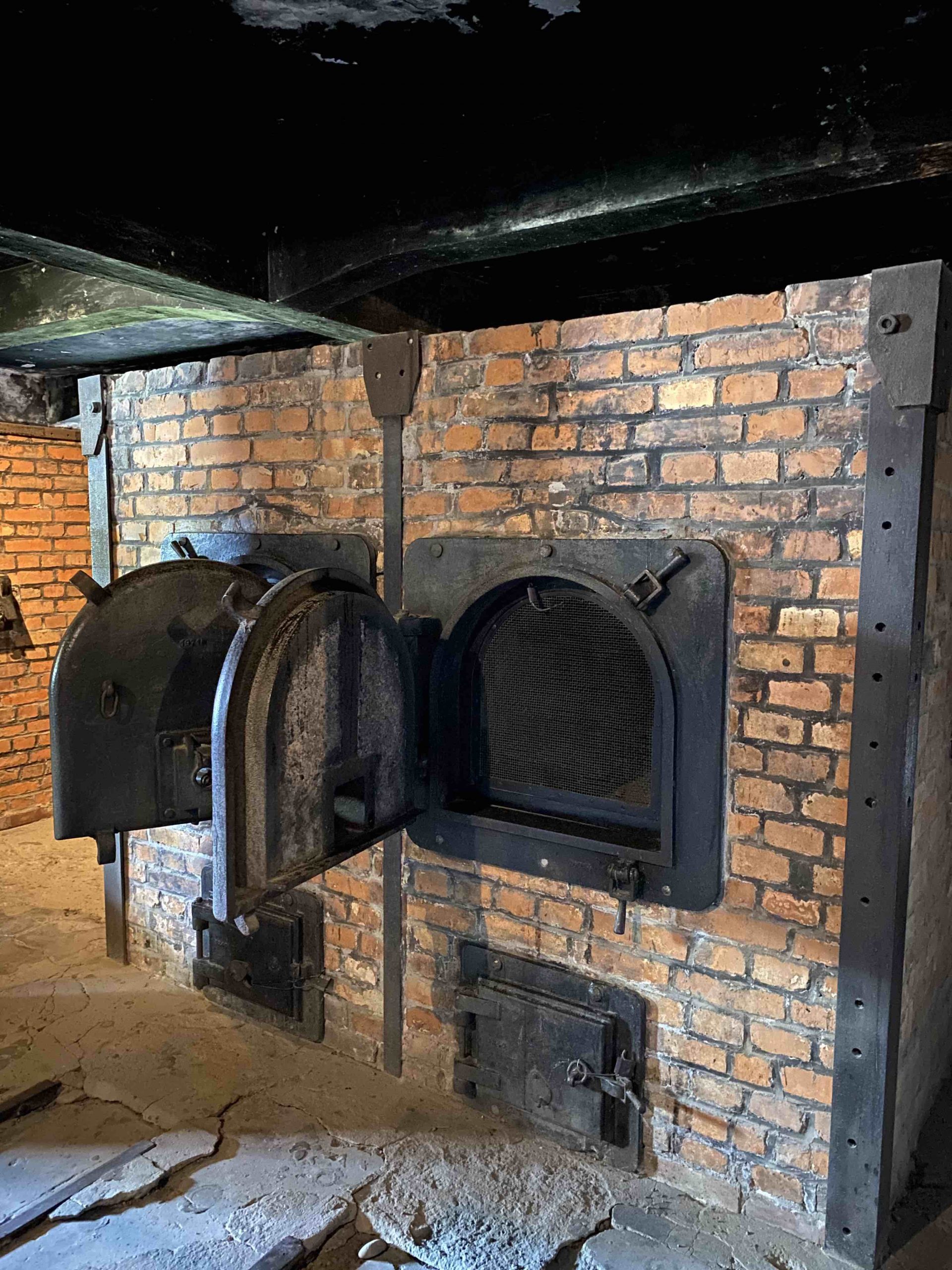 We were taken to a former gas chamber and learned about the deception the Germans used when they brought their captives into them. The Jews were told they were going to take a shower, to remember which hanger number they hung their clothing up on, to write their name on their luggage so they could find it later, and that they’d be reunited with their family soon. On the rare occasion that someone resisted the “shower”, they were made an example of — the resister would be paraded in front of their peers and then shot.
We were taken to a former gas chamber and learned about the deception the Germans used when they brought their captives into them. The Jews were told they were going to take a shower, to remember which hanger number they hung their clothing up on, to write their name on their luggage so they could find it later, and that they’d be reunited with their family soon. On the rare occasion that someone resisted the “shower”, they were made an example of — the resister would be paraded in front of their peers and then shot.
Auschwitz I became overfull very quickly and it became clear to the occupiers that more camps were needed to manage the mass amounts of people. This resulted in the fast construction of Birkenau I (and the start of Birkenau II). The location chosen for Birkenau I was due to its centrality in Europe — it was on a series of rail lines that the Germans extended and connected throughout the continent to serve their evil needs. The train tracks were eventually extended to go further into Birkenau I to maximize “efficiency”.
Birkenau I looks very different than Auschwitz I due to its quick and shoddy construction. The Germans didn’t have much funding to build it and they felt pressured to get it done as soon as possible. Wood was used to throw up bare-minimum buildings that are now deteriorating if not entirely collapsed. The goal was to hold as many Jews as possible so 4 level bunk beds were constructed, for example.
Between Auschwitz I and Birkenau I at least 1.1 million Jews were murdered. The Germans were in the process of constructing Birkenau II when it became clear they were losing the war and building ceased. As the war ended, Germans moved the remaining Jews from Auschwitz I and Birkenau I to other camps or murdered them as quickly as possible.
When the Red Army came to liberate the remaining prisoners, the prisoners were so malnourished and starved that many of them died from eating too much food too quickly. No one had experience dealing with this type of trauma.
The guide ended the tour by stressing the significance of our visit. She said the way we can honor the lives taken is by bearing witness to the utter atrocity that occurred. We need to understand that humanity is capable of such terror. And the only way to prevent it is by carrying this knowledge with us and doing our part in making sure history doesn’t repeat itself.

